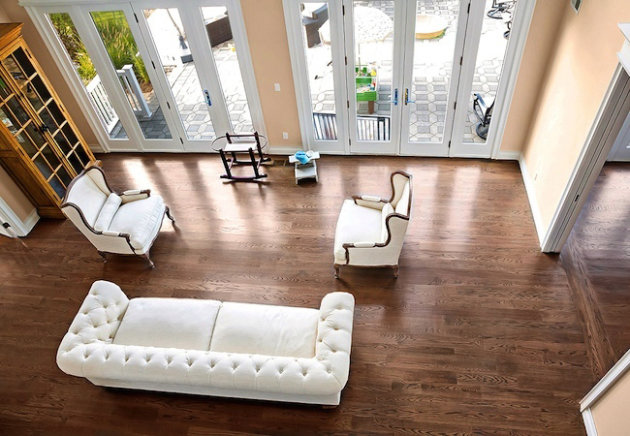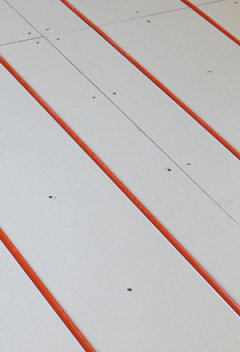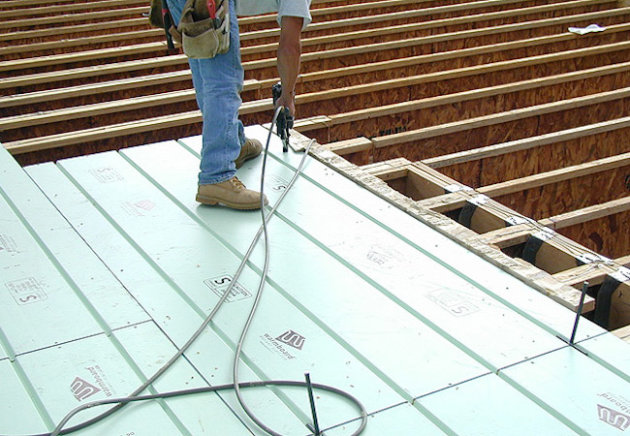Radiant heating comes of age -- after millennia

While the origins of radiant floor heating stretch way back into the mists of history, the technology has come of age only in recent years. Today, it works as well as any other traditional system, if not better, and operates at least 25 percent more efficiently than forced-air systems, the most ubiquitous type of heating in the United States. Increasing numbers of consumers are choosing radiant heating, not only for the energy savings it provides, but also for its indoor air quality benefits and its ability to free homeowners from the tyranny of radiators, baseboards, and vents. That said, many wonder why radiant heating isn't in more American homes, especially considering its popularity abroad (in Europe and Asia, 40 and 80 percent of homes, respectively, are heated by a radiant system). Well, though it may now be a viable product, it didn't start out that way.
The very first radiant heating systems emerged in the Roman Empire. In the wealthiest citizens' homes, the walls and floors were buttressed by slim chambers called hypocausts. Fires around the building fed heat into these hypocausts, which in turn heated the interior spaces of the home. Around the same time, on the other side of the globe, the Korean ondol system heated homes by means of cooking fires that transmitted heat from the kitchen to a series of strategically positioned stones. These stones would absorb the heat and slowly radiate it outward. Though primitive compared with the finely tuned, zero-maintenance radiant-heating products available today, the fact that the basic technology has been around for so long speaks to the simple wisdom of its design.
[Want to remodel your home? Click to find a home contractor now.]

When environmental concerns came to the fore in the 1970s and 1980s, a diverse group of professionals and amateurs began testing out various nontraditional modes of building. In these experimental efforts, the principles of radiant heating were often aligned with solar power. A typical setup would put a concrete floor, painted a dark color, beneath a sunny south-facing window. Throughout the day, the sun would heat the concrete, then as night fell and temperatures dropped, the concrete would radiate heat back into the home. That worked fine for supplemental heat, but it could not heat a whole house through the winter season.
In the next phase of development, radiant heating took a big step toward becoming its own entity, an active system capable of providing heat with or without help from the sun. Ingeniously, hydronic tubes were set into the concrete flooring. Water heated by the boiler could be pumped through the tubes, heating the concrete in the absence of sun. The only problem now was the concrete. Whereas its thermal mass had proved an asset before, it was now making the system sluggish. Not only would the concrete take too long to heat up, but it would also continue to radiate for several hours after the thermostat had been turned down or off.
[Want to remodel your home? Click to find a home contractor now.]
The answer, Warmboard found, was to combine hydronic tubing with lightweight, highly conductive aluminum. Compared with concrete, aluminum is a staggering 232 times more conductive. So when heated water travels through the hydronic tubing within aluminum panels, the metal swiftly transfers the heat to the home. The panels conduct heat so effectively that they can be used beneath any type of flooring, be it tile, hardwood, or even thick-pile carpeting.
Broadly similar products exist on the market, but Warmboard stands alone in terms of efficiency and conductivity. Put simply, Warmboard requires the least amount of energy of any radiant system to maintain a comfortable temperature in the home. It’s estimated that Warmboard can hit the target temperature with water that's 30 degrees cooler than a competing system would require to achieve comparable results. This efficiency means that your furnace doesn't need to work as hard, and you save an additional 10 to 20 percent on energy costs—above and beyond what you're already saving by choosing radiant heat over a traditional system.
It may have taken a few thousand years to get right, but radiant heating has finally arrived.

This post has been brought to you by Warmboard. Its facts and opinions are those of BobVila.com.

No comments:
Post a Comment